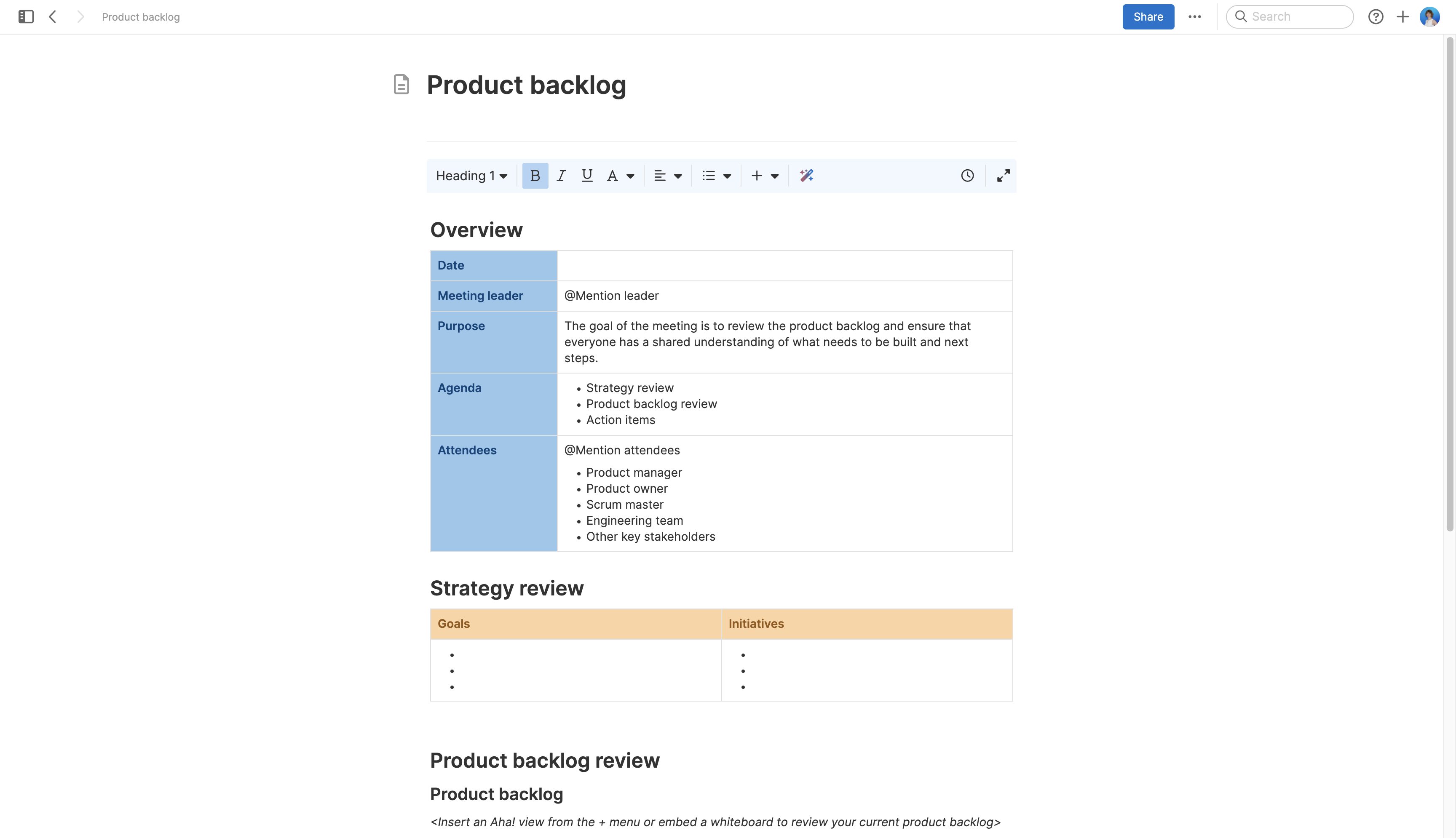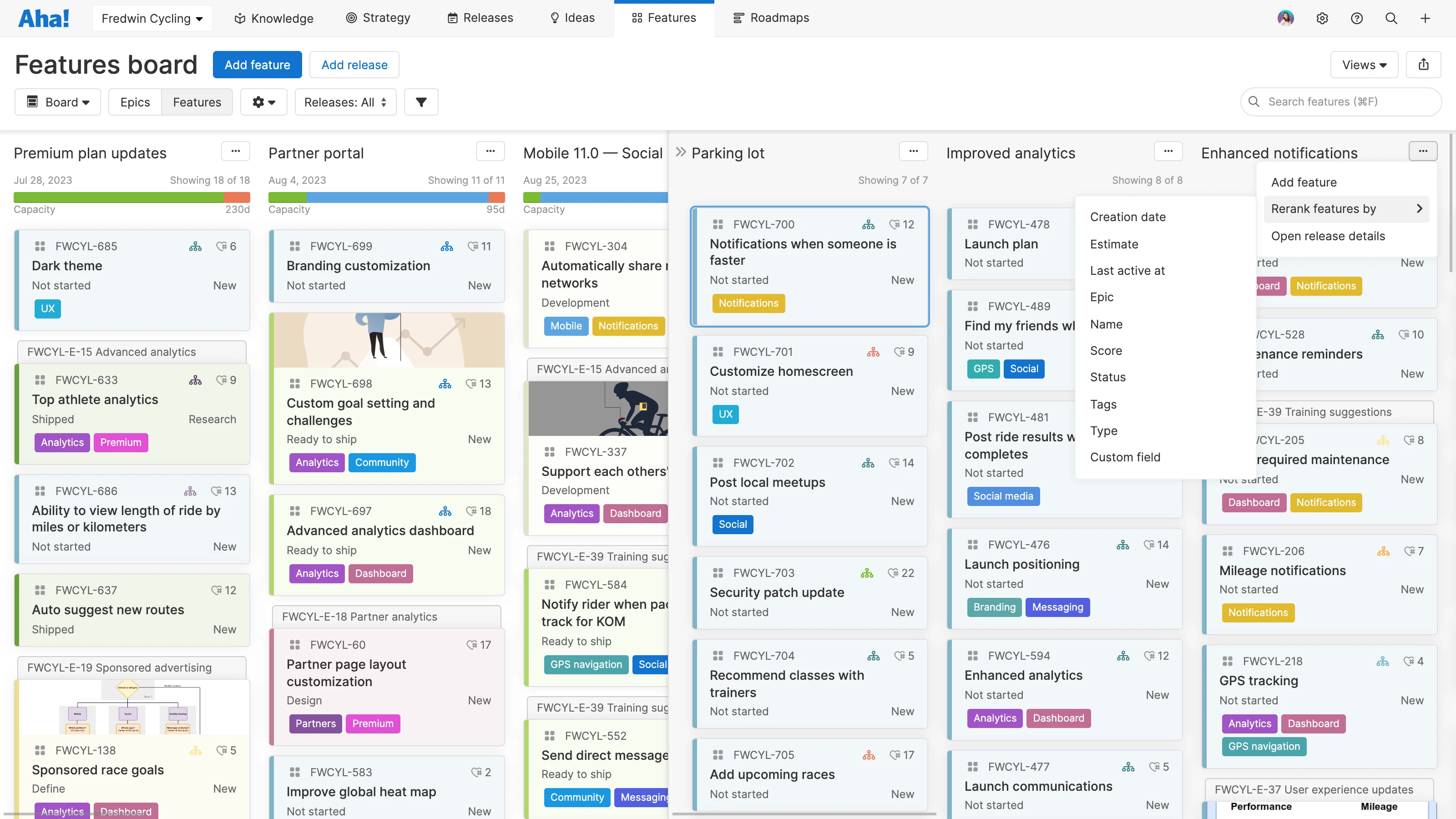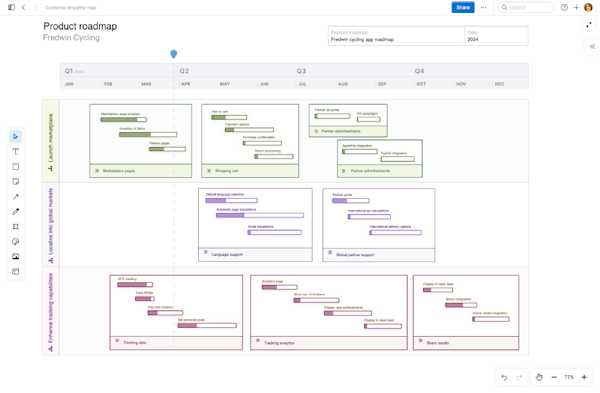What is a product backlog?
What to know about managing and prioritizing future product ideas
Last updated: October 2025
A product backlog houses all the potential updates to your product: new features, updates to older ones, bug fixes, and similar items. Learn about setting up your first product backlog, best practices, backlog management, and more. |
A product backlog is a prioritized inventory of new features and other enhancements. It should contain work that you have identified as valuable to implement, but have not yet added to a release. Essentially, a product backlog functions as a queue for upcoming product updates.
You will always have more to do than what can fit on your product roadmap. So you need a place to keep this work before it is ready to build. This is your product backlog. As you plan new releases, you will decide what to work on by moving items from your backlog to the roadmap — typically starting at the top of the list, where your most valuable features should live.
Manage your product backlog in Aha! Roadmaps — try it for free.
Deciding what belongs in the product backlog (and how it gets prioritized) is typically part of a product manager's job. These decisions depend on a variety of factors — including internal feedback, customer requests, and effort to build. But the most important criterion is strategic alignment. Mapping backlog items to your product strategy ensures that the product team is consistently working toward measurable goals.
It takes effort to effectively manage and refine a product backlog. But with the right processes and tools in place, it can become a streamlined piece of your product development process. In this guide, we will walk through the fundamentals of optimizing your product backlog. Use the following links to jump ahead to a specific section:
Product backlog best practices
Product backlog best practices
Who owns the product backlog?
In many cases, the product manager is accountable for the product backlog. They decide what belongs on the priority list in order to deliver the most value with each release. But if you have a product owner on your team, it is likely they will be responsible for the backlog instead (with close support from the product manager). This is more common among organizations that practice scrum.
Even though product backlogs (as well as sprint backlogs) are commonly associated with scrum, it is worth noting that anyone can (and should) use a product backlog to organize upcoming work — regardless of which methodologies you follow. This is how we treat our own product backlog at Aha! and it is how we are approaching the advice we share in this guide.
Related:
How to manage a product backlog
A product backlog is never "done" — it is a shared asset that plays an ongoing role in your release planning process. It is up to you to actively refine and prioritize what is in the backlog, ensuring that the work captured there does not become outdated over time. This is why many product teams establish set processes for backlog refinement.
For a deep dive into this topic, consider reading our guide on backlog refinement. If you want to get started quickly, though, here are a few tips for managing your product backlog:
Gather feedback: As you gather new insights from stakeholders, customers, and supporting teams, use that information to inform what belongs in the backlog — and what should be at the top of the list.
Say "no": Requests for new features and fixes can stream in from anywhere. To keep your backlog manageable, you will need to triage features that are less impactful or out of sync with your vision. You can always reevaluate them in the future.
Keep it fresh: Over time, features that were once a priority could become obsolete. This can happen when your goals shift or you adopt new technologies into your product. Make a habit of clearing out features that are no longer relevant.
Categorize: Your backlog does not have to be a single column — you can use multiple lists to group backlog items by category, initiative, or other themes. If you use product development software, you can also add tags to visually denote types of work.
Prioritize: Rank and sort items by priority so it is easy to see the most impactful items at a glance. This can help you plan new releases more efficiently. Refresh regularly as priorities evolve.
Add details: Ideally, any work items in your backlog should be ready to be pulled into a release at any time. That means all requirements, effort estimates, acceptance criteria, and other feature details should be filled out and kept current for all items in the backlog.
Set up backlog refinement meetings: Establish a feedback loop by scheduling regular backlog refinement meetings. These sessions act as a forcing factor for reviewing the backlog. Bring the product team together to go over the contents and align on what belongs, what does not, and what updates should be made.
Refine your backlog with this template in Aha! software — try it for free.

Moving work from your backlog to your roadmap
Remember that keeping a product backlog is just one step in the product planning process. From here, you will start to pull items from your backlog into releases and onto your roadmap. Your development team will get to work building the features you have prioritized. After launching, your product backlog will fill up again — and the cycle continues.
It takes some serious coordination to move work smoothly throughout product development. And it helps if you have the right tools. With Aha! Roadmaps, you can define detailed feature requirements with the help of an AI assistant, quickly build, rank, and sort your product backlog, and set priority limits for what you can achieve within a release. Then, it only takes a few clicks to go from backlog to roadmap and bring your product strategy to life — all within the same tool. Try it for free.
Editor's note: Although the GIF below still shows core functionality within Aha! software, some of the interface might be out of date. View our knowledge base for the most updated insights into Aha! software.
The Prioritization view in Aha! Roadmaps helps you visualize all backlog items based on importance. Here, we use priority limit lines to rank each feature.



